How to Mantle (Climbing Technique)
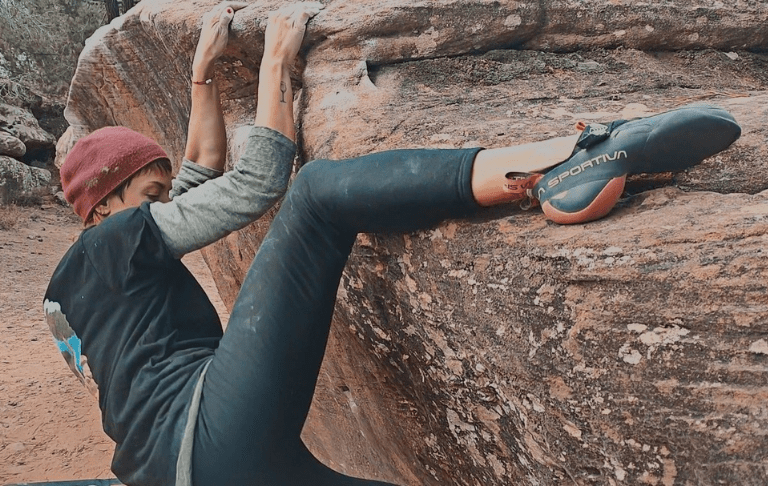
Published on: 10/08/2022
Both young crushers and experienced rock masters strive to perfect their mantling skills. And yet, for many, the word induces anxiety. But why? What makes mantles so special?
What is a mantle?
Mantling is a unique climbing technique involving bringing your center of gravity past a horizontal ledge using a combination of high feet, locking off, and pressing down with your triceps.

Origin in Rock Climbing
A quick climbing history lesson takes us back to early mountaineering when climbing resembled alpine route trekking. Later, bouldering developed as a separate discipline (instead of just training for sport climbing), so outdoor boulderers adapted the technique.
Slowly, mantles made their way into indoor climbing gyms in an attempt to expand climbers’ repertoire and prepare them for outdoor climbing.
Etymology
The term “mantle” originated literally from the mantel of a fireplace – the flat lip of the fireplace frame. (Both spellings are admissible.) Fireplace mantels are flat and narrow slabs of stone similar to a shelf – not unlike ledges and flat tops seen in rock climbing.
Therefore, you’ll often face mantling in outdoor bouldering when scrambling onto rock shelves or boulder tops. Thanks to this technique, you can make the most of a narrow stone slab and climb it without other useful holds or good footholds.
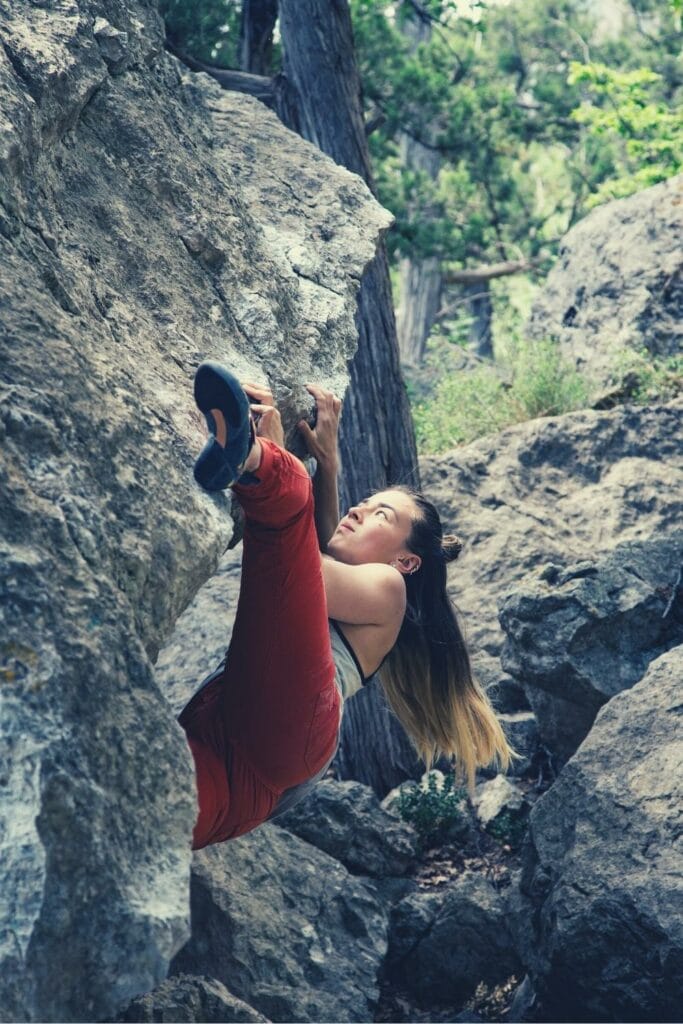
Is Mantling Dangerous?
With this technique, the feet are quite far up, and you try to press and rock over onto the surface in a semi-horizontal body position.
Due to the insecure nature of this body position, many climbers are reluctant to learn it properly. Failing to find the best position can result in a worst-case scenario flop off the very top of a rock.
However, failing to practice the mantle is a sure way to expose yourself to danger whenever you try to do it unprepared.
Types of Mantles in Climbing
Every mantle is unique and will offer its own individual challenge to overcome. Whether you encounter it mid-climb in a cruxy section or you face it at the end of your boulder problem with little beans left in you to battle it. A mantle always adds spice to rock climbing.
Depending on the availability of foot holds on your climb, you’ll see two popular types of mantles.
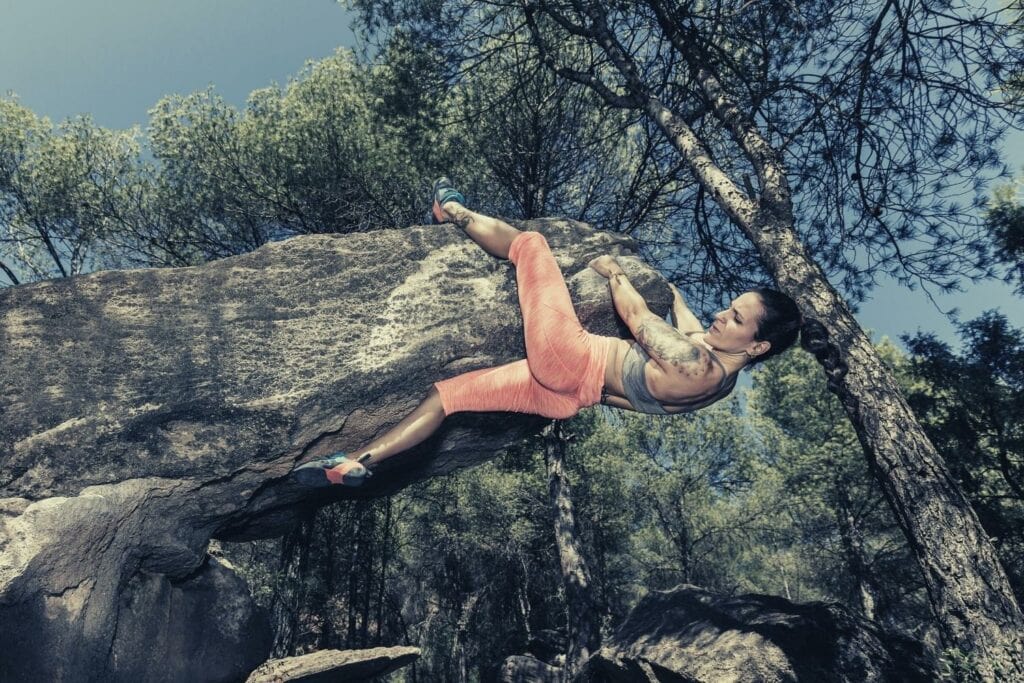
The “Swimming Pool” Mantel
Imagine trying to exit a pool at the edge. Most people pull down on the edge of the pool to gain momentum, then plant their palms mid-movement and start pushing down. To climb out of the pool, you place one foot next to your hands and step up.
Now, the sequence is very similar if you’re not in a pool but on a shelf-like rock formation. You pull to generate momentum, switch to a push, and use a high foot close to your hands to bring your body weight past the lip.
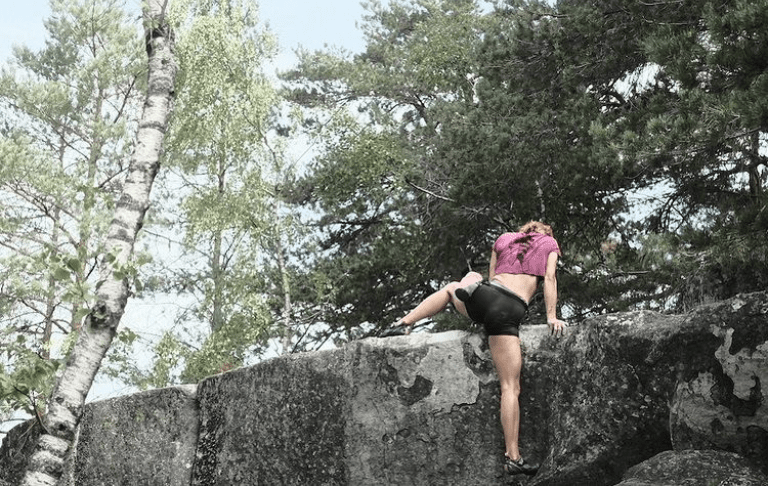
The “Beach Whaling” Mantel
This one is actually nobody’s favorite, as it’s way less elegant. You could even say it’s a mantle gone wrong.
Let’s say that somewhere in the middle of the mantle, your foot slips, or, against better judgment, you reach out with a hand in the blind hope of finding a hold to pull on to.
That’s usually a point of no return, and many climbers opt for the only way to finish the mantle: throwing themselves onto the rock like a tired humpback whale.
Contrary to what you might think, friction doesn’t necessarily improve when you lay flat on the rock with your climbing clothes on. You also now have much less control over what happens next since you can no longer pull or tug.
The beach whaling ashore mantle won’t work on the steeper terrain of overhanging routes. Should you lose your balance in such a situation, it’s better to abort, jump down safely, and try again.
Why Is Mantling Important?
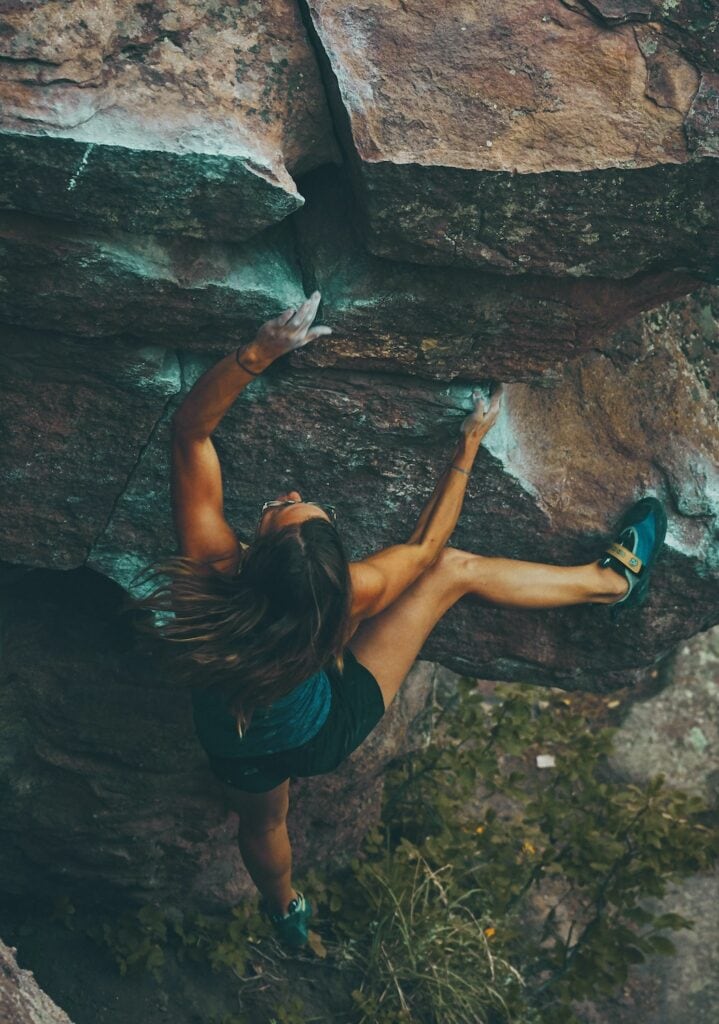
Purpose
The ultimate goal of the mantling technique is to overcome a crux or surmount a cliff edge without having any decent holds to pull on. When the next hold is too far out of reach, a mantle can help you bring your entire body close to it.
In the absence of good footholds, you can resort to pulling with your heel to rock your body over the lip.
Application
Mantling finds a broad application in outdoor bouldering, particularly on top-outs.
You may have learned that the goal in bouldering is to match the top hold with both hands in a controlled manner, and that’s true on most problems in most indoor gyms or in competition climbing.
But once you venture outside to boulder on real rocks, you’ll quickly discover that you often have to climb beyond the outermost hold – you have to top out the boulder, i.e., stand on it. Almost every boulder problem has a top-out that involves some sort of mantle.
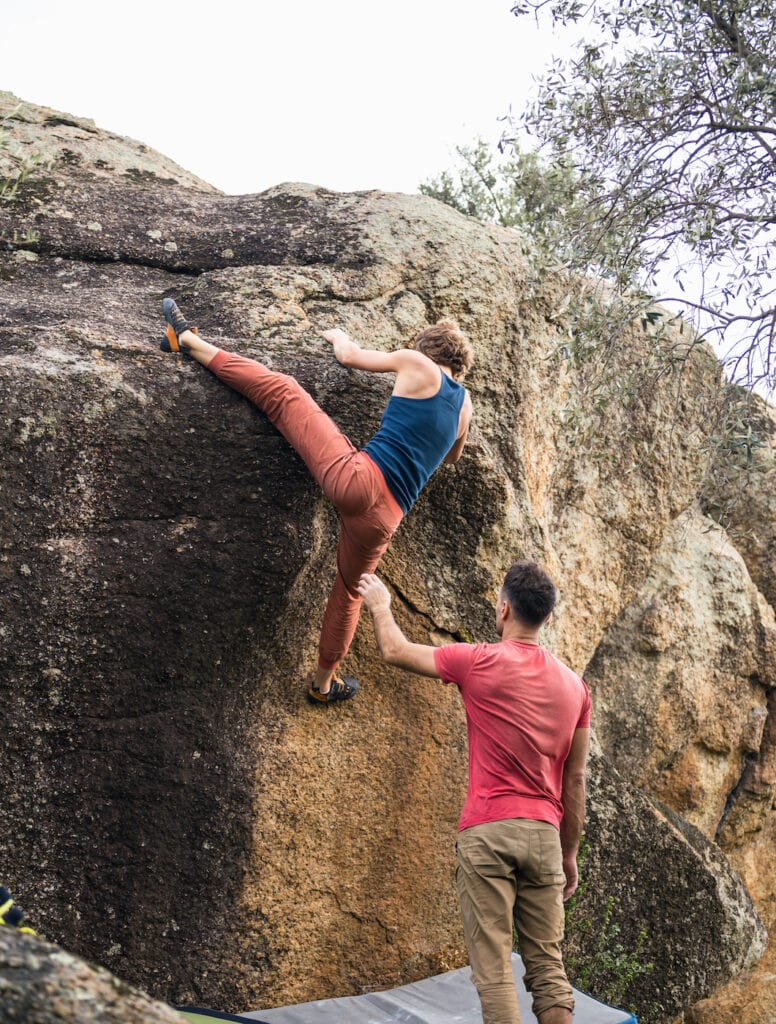
How to Mantle: A Step-by-Step Guide
1. Position your hands
First, you grab the lip with both hands and look to find the highest possible feet to establish on.
2. Place a heel hook
Next, gently bring your foot up and carefully place it. Look for a feature, a crimp, or even a small divot in the rock. These can provide a more favorable position and reduce the risk of slipping.
A well-placed foot is incredibly important! Many prefer a heel hook because it helps pull you closer to the rock.
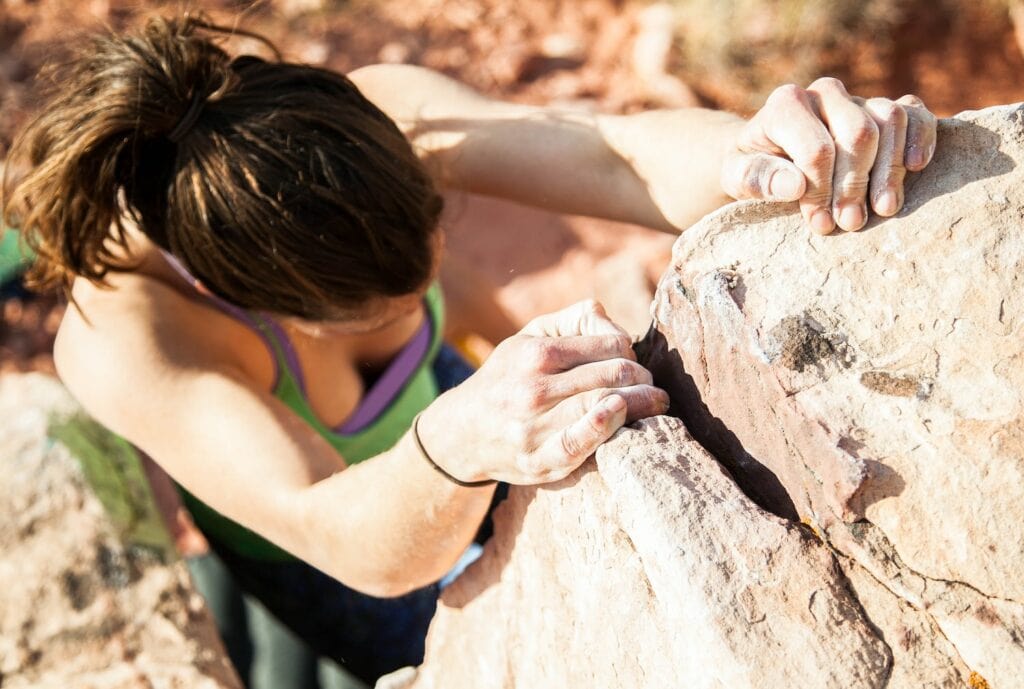
3. Pull up to a dead point
Now pull straight with your arms until you reach a dead point – the highest point you can bring your body to in one fluid movement upward. The added pulling power of your hands and your high foot will make generating a strong pulling motion upward much easier.
4. Lock off and plant the palm
Once you reach the dead point, lock off the arm farther away from your foot, and turn the palm of the other hand to plant it down onto the rock.
5. Start pressing down
From this point on, you switch from a pull to a push while still applying force with your foot. The counter-pressure of the pulling arm and the pushing hand will help you gain more height.
Sometimes it helps to kick in the air with your trailing leg to bring your body up a few more inches.
6. Top-out
Eventually, you’ll reach a reasonably comfortable zone where you can feel the force of gravity begin to ease. At this point, you can also rotate the other palm, release the heel hook and roll onto your toes, bring the free leg up onto the lip and stand up victoriously.
Tips for Practicing Mantles
Avoid sweaty palms
Mantling is about friction, so chalk is your friend! Sweaty fingers reduce your grip, and there’s nothing more intimidating than losing grip while your foot is somewhere above your head!
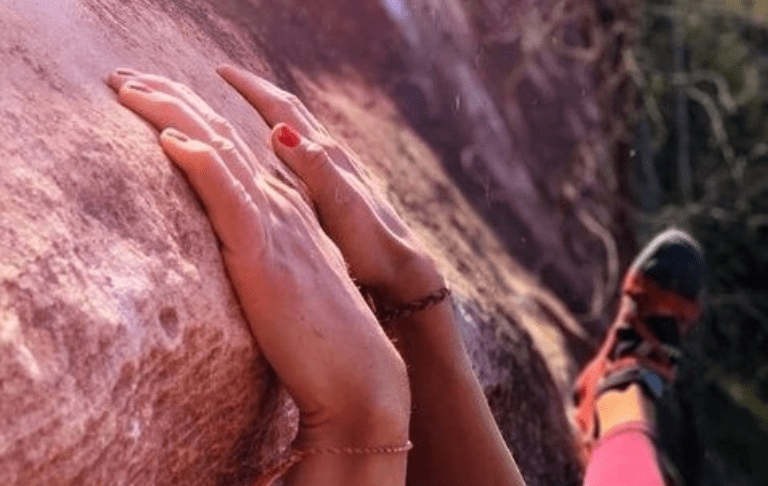
Feet lead
In mantle climbing, the feet lead the motion. Not your classic “feet first” routine but you still want to generate as much force as possible with your feet and legs.
Work on flexibility
Keeping your hips close to the wall will help you balance and give you more stability and control. Wrist, ankle, and hip flexibility are super important for a better range of motion, so make sure to train those.
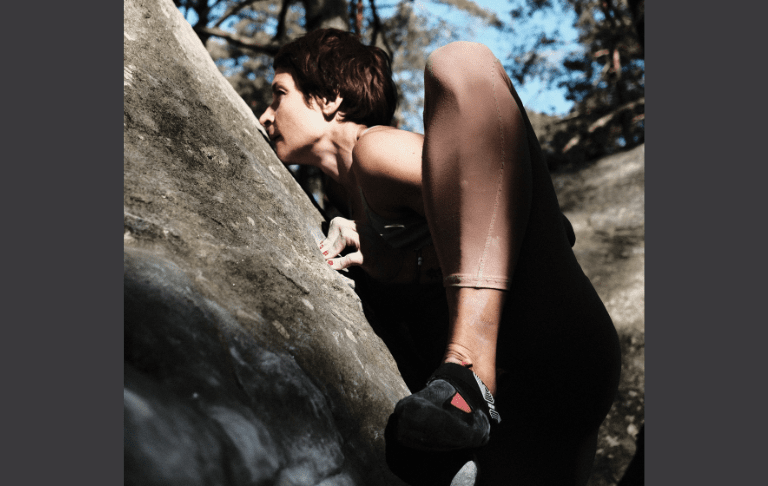
Practice indoors
More and more indoor climbing gyms offer boulder problems with mantles, designated top-out areas where you mantle almost everything, and even sports routes that ask for the mantling technique.
Build up your training
Start with the very easy stuff, preferably close to the ground (don’t top out at first) just to get the hang of it. Once you feel more comfortable, add the challenge of finishing a boulder problem with a mantle. This will require a good head game and sufficient knowledge of how to fall safely.
Prepare Mentally
A mantle can be quite mental, pardon the pun. It’s known to be one of the most intimidating climbing techniques.
The reason is that when you mantle, you have your body high and exposed to a possible awkward fall. The entire move is not very intuitive or logical, so it requires commitment, concentration, a deep breath, and good body awareness.
Mental guidance from experienced climbers can help you keep your cool and give you an added sense of security.
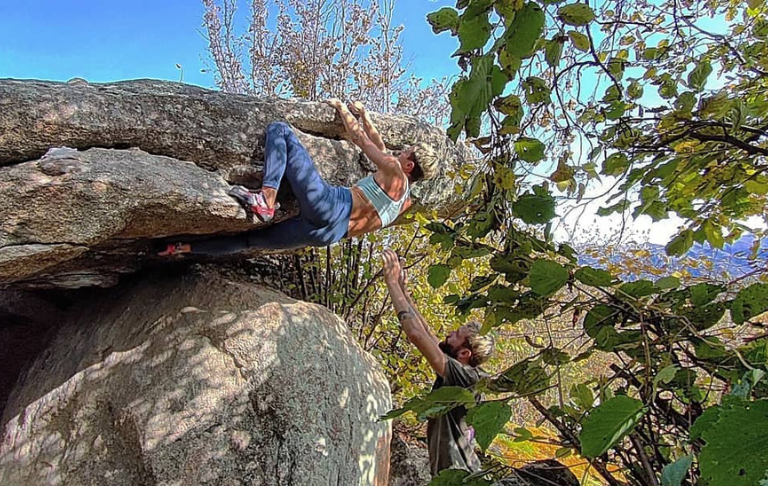
Final Thoughts
The truth is that the misunderstood mantel is an amazing technique and a useful move to master. Learning how to mantle well will inevitably make you a better climber and way more confident, especially on unstable terrain.
The secret is to practice, practice, practice – because practice makes improvement. Mantling is not very intuitive, and it takes a few tries to understand it and a few dozen more to coordinate all parts of the move.
But once you get it, it’s guaranteed: you’ll experience new freedom in your climbing!
